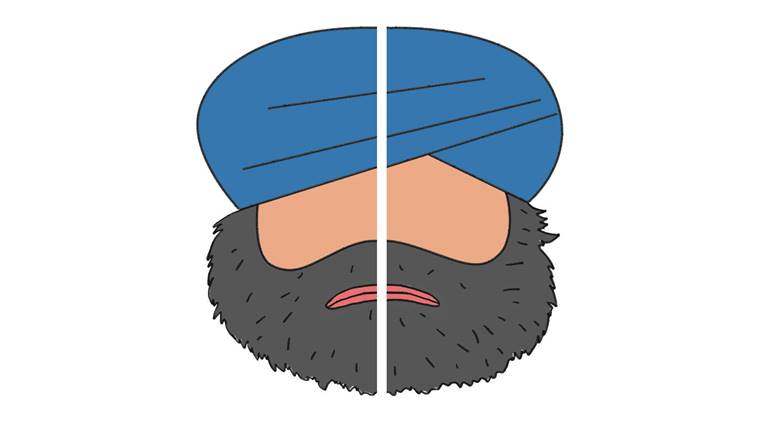
In my childhood, I heard a folk couplet sung by Punjabi girls performing the folk dance giddha. They sang: Nachaan main Patiala/ Meri dhamak Jalandhar paindi (I dance in Patiala/Jalandhar can feel the beat).
But only last year I heard the following couplet: Main Moge nachaan jaago vich/ Meri paindi dhamak Chicago vich (I am dancing in Moga in a jaago/ My beat can be felt in Chicago).
It can be vice-versa, Punjabi girls could be dancing in Chicago and their beat would vibrate in Moga. Today Punjabis have migrated to more than 150 countries, but no matter where they live, Punjab lives on in their hearts. Professor Puran Singh, one of the founders of modern Punjabi poetry, rightly described Punjab as a land of great meetings and great separations. Being a frontier province, it has become the melting pot of many races and cultures.
It was the sacred rendezvous of great saints and sufis belonging to different places, faiths and castes. They include Baba Farid, a Muslim Sufi whose grandparents migrated to Punjab from Kabul; Baba Namdev, a Beethal bhagat from Maharashtra; Sant Kabir and Sant Ravidas from Varanasi; Krishan Bhagat Jaidev from Bengal; Dhanna Bhagat from Rajasthan and many others. Coming from different regions, religions and races, they sang along with the Sikh gurus. It was a divine orchestra, a great interfaith festival, going on day and night under the skies. It is in Guru Nanak’s cosmic anthem: Gagan mein thaal ravi chand deepak bane/ Taarika mandal janak moti/ Dhoop malianlo pawan chavro kare/ Sagal banrai phoolant jyoti (Upon the cosmic platter of the sky/ the sun and the moon are the lamps/ the stars and their orbs are the pearls/ the wind coming from the sandalwood of the Malyagiri hills is the incense).
It was a meeting not only of races, religions and castes, but also stars and lamps.
The greatest separation occurred in 1947. Cyril John Radcliffe drew on the map a line that began at the borders of Kashmir, cut through the middle of Ravi, severed Amritsar from Lahore, separated villages from their fields, rivers from their canals, Sikhs from their holy places, and ended at the border of Bahawalpur.
The line tore apart not only the land but also the hearts of the men, and the pure bodies of this land’s daughters. The water of five rivers can’t wash off the cursed marks 1947 left on the heritage of the Punjabis. The bloodthirsty line swallowed 60 lakh Punjabis in a few days. Over 1.2 crore Punjabis lost their homes and had to cross the border. Ten lakh daughters were separated from their families.
And then, 1984.
Maatam, hinsa, khauf, bebasi te anyaay/ Eh ne aj kal mere panjaan dariyaanva de naam (Mourning, violence, fear, helplessness and injustice/ These are the names of my five rivers today).
I am reminded of Dr Noor’s love poem: Tethon vichhar ke/ Main vichhraya hi chala gaya (After separating from you/ I went on separating again and again).
This short love poem is relevant to Punjab too. The “you” in the poem can be interpreted in many ways. This I leave to the imagination of my readers.
Today’s Punjab is suffering so many separations. Not only because its sons and daughters are migrating in thousands to foreign lands but also because custodians of our values relating to religion, politics and education have failed us. We, the intellectuals, are seeking ways of escape: Panchhi taan udd gaye ne/ Rukh vi salaahaan karan/ Chalon ithon chaliye (The birds have already flown away/ Now even the trees converse/ Let us go somewhere else).
Another great separation is in the schools built on the land in which the language of the land is being insulted with impunity. Its young sons and daughters are discouraged and fined if they utter a word in their mother tongue. This attitude is creating anxiety, silences and inferiority complex in the minds of our children. I am not against learning English, but the right way to learn any language other than your mother tongue, as we are told by linguists, psychologists and educationists, is through your mother language. We must adopt the scientific way, it will make our children more creative and confident.
The government is neglecting its own schools so as to give a fillip to private schools.
On August 18, 2015, Sudhir Agarwal, a high court judge, in a ruling, asked the chief secretary of Uttar Pradesh to issue an order to government officials and the representatives of people and judiciary to send their children only to government schools.
Guru Nanak, whose 550th birth anniversary we are celebrating this year, had said: “Neechan andar neech jaat/ Neechi hoo att neech/ Nanak tin ke sang saath/ Wadya seo kya rees/ Jithe neech samaliyan/ Tithte nadar teri bakhsees (Nanak seeks the company of the lowest of the low class. Why should he try to compete with the rich. On the lands where the lowly are cared for, God’s blessings rain down).”
Punjab, the land of great meetings and separations has suffered too many separations. Now it needs a great meeting.
Hovaan ik din/ Raag, shaayiri, hussan, mohabbat ate nyaay/ Mere panj daryaanva de naam (Let us aspire, pray and strive to make music, poetry, beauty, love and justice the new names of our five rivers).
Patar, a celebrated Punjabi poet, is chairman of Punjab Kala Parishad. Translated from Punjabi by the author